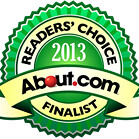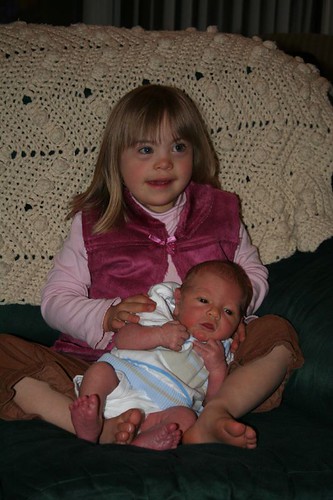I understand the basic concept of the Individualized Education Plan (IEP) as it pertains to Kayla and school. I understood what it was for, how they (mostly) work, who attends them, what we do in the meetings, what is discussed in the IEP. I've skimmed over info from Wrightslaw and have attended a workshop or two. However, it still wasn't enough. I haven't been proactive enough. I haven't researched enough. And I feel like I have failed Kayla, to some degree, where school is concerned.
Trying to make some changes now to rectify that.
I am reading the book Wrightslaw: All About IEPs and finding so much useful information. The topic on Assistive Technology has been particularly interesting.
Up until now I thought of assistive technology (AT) as (mostly) something children used to communicate with - ie if they couldn't speak, or didn't have enough speech intelligibility. Kayla talks. A lot. I think most of it is understandable, especially in context. So ... I never thought much about AT for her. But AT is defined as 'any item, piece of equipment, or product system, whether acquired commercially, off the shelf, modified, or customized, that is used to increase, maintain, or improve the functional capabilities of a child with a disability."
Then there was the piece on the Henderson Inclusion school that I blogged about. In it they show a 2nd grade student's comprehension of a story he'd read writing longhand. He wrote 2 short sentences. He has trouble with spelling and handwriting. His response wasn't a 2nd grade benchmark. But then he showed his comprehension of another story by using a computer. He uses a text reader and a word-prompting software to help him produce something more on grade level. Hearing that I thought how much Kayla could use something like that. Reading and writing are laborious for her. It seems to take 'forever' for her to get through reading a short site-word book. I think she actually needs books with NO pictures because she stops after reading 2 or 3 words, looks around the picture, has to be prompted to go back to reading the sentence. I think by the time she finishes the sentence, she's forgot what she's even read.
So, back to the section on AT I've been reading. I've discovered it encompasses all sorts of tools that can help a child be successful in school, but more importantly, help the student access the general education curriculum.
- AT helps children use their strengths to compensate or 'work around' weaknesses caused by the disability.
- Law requires schools use AT devices and services to maximize accessibility for children with disabilities.
- Instead of the child becoming dependent on parents, teachers, and peers for help with schoolwork, AT helps the child be more confident and independent.
Here is an abbreviated list of when AT is appropriate:
- allows a child to perform functions that can't be achieved by other means
- increases the child's endurance or ability to complete tasks that are too laborious to be attempted on a routine basis
- allows the child to concentrate on learning, not mechanical tasks
- provides greater access to the general education curriculum
- allows the child to participate in the least restrictive environment
In case there is some concern that using an AT device (such as a calculator) is a crutch here is the answer to that in the book, "If a child needs assistive technology to have access to the general curriculum and benefit from education, it is not a crutch. A child may depend on a device to perform, not allowing a child to use the device will prevent the child from learning and receiving an appropriate education. If you need glasses to read should you be forbidden from using glasses to read?"
So now I've begun scoping the internet for websites that give examples of AT and how they're used. This one seems to have a lot of great information.
I've also requested that Kayla have an AT evaluation; I think there are tools out there that can help her go so much further in her education.
"For people without disabilities, technology makes things easier. For people with disabilities, technology makes things possible." Dr. Katherine Seelman



















































7 comments:
Okay, very, very cool...I, too, thought that AT meant communication devices only, and with Samantha talking (also non-stop!), I didn't think it would pertain to us. And I've never read Wrightslaw. Guess I should...
Thanks for that great post!!!
Btw, I'll have some dates soon for when we'll be down in your neck of the woods in August again...
Thinking ahead ... Jess is a great communicator and writer, but I did my own little test with her in elementary school (around grade 4 I think) of the difference in her response to both reading comprehension questions and creative writing writing out by hand versus using a keyboard (we had already taught her pretty good keyboarding skills. It was amazing! Just even the amount she wrote (without even looking at the depth, detail, and level of writing). AND now, organizationally, an ipod for an agenda/calendar is KEY to her staying organized. She has a pretty busy schedule and we are trying to fade our prompting. Anything that can also be used as scaffolding . . . great overviews of AT can also be found on learning disability sites. That's where I often went for support and ideas. Given how much has changed, technologically, you actually have so many more resources at your finger tips that will help you children access the curriculum and demonstrate their knowledge . . . lucky you guys! Just a lot more research! Also think scheduling and breaking tasks down into their component parts .. there are some pretty cool video and/or picture scheduling apps for that.
But the very problem is, that although there are incredible devices out there that provide children/adults with disabilities to function in society and to access things such as education, and not to mention the vast legislation on equality and human rights..
What is the point if our system has so much red tape that these devices aren't accessible?
Whilst basic human rights are still being breached in regards to appropriate home conditions so that children/adults have access to a washing area for example - what hope do we have for our children to access AT?
Sorry to be pesimistic! I was at the children's hospice this morning, and we were discussing this issue.
What is the US like in terms of access to appropriate needs/equipment?
In the UK, we never get a smooth trip :(
Rant over.
This is really good information for me--thank you for giving me more to think about!
Hmmm very interesting read... My 7 year old son has an IEP, because he is dyslexic & is still reading at a kindergarten level.
I guess I haven't done enough research on this topic either, because while I knew about AT for speech issues, I never even considered asking about it for my son (who had a speech delay as as a toddler). I have an IEP meeting scheduled for this coming Friday. After reading this post I'm going to be bringing up this topic, because I truly believe that technology could help him (even if I have to pay for an iPad myself). I guess I better start researching it a little more.
Thank You!!
A
When someone mentioned AT I always thought iPad too. It's great to know that it means so much more. I've saved some of your resources so I have access to them down the road!
Keyboarding is a wonderful example of AT. Lexie has an AlphaSmart word processor provided by the school to use because writing is so intensive for her. With the AlphaSmart she has wonderful grade level stories without she has a few disjointed sentences. It is written into her IEP that she will have the use of some type of word processor for her written assignments. Also she does have long passages read to her either by a teacher or in some cases listening to a CD. Being able to listen to books and assignments on CD would be another form of AT. For the keyboarding we went through her OT to get that going as it is fine motor skills and the CD we went through her resource room teacher.
JoDee
Post a Comment